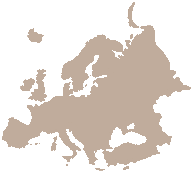The societal and scientific bases of the study
‘Suomalaisen arvomaailman muutos, globalisaatio ja ajan henki' (The change in the Finnish set of values, globalization and zeitgeist) is based on the idea of values as motives that guide human behavior and as forces that maintain stability but enable change in society, and which are influenced by economic and societal phenomena.
Globalization
One of these forces in recent decades has been the globalization of markets, which Theodore Levitt defined in 1983 as a technology-driven process in which companies produce standardized products for similar target groups in different countries.
The shift from multinational to global action together with the deregulation of financial markets spurred growth in the markets for home electronics in the 1980s. The same happened to information and communications technology ten years later, followed by mobile services and social networks in the 2000s.
Theoretical frame of reference
The study adopted the Schwartz (1992) theory of universals in the content and structure of values as its frame of reference. Values are measured with the two inventories developed by Schwartz (SVS, PVQ), and with the attitude estimates based on the Finnish data of the 1980s.
The four seasons of globalization
The research focused on the consequences for people when they get access to products, devices and services that may be unheard of. Or encountered new surprising situations that scared or excited them. In order to analyze these consequences, the research project was divided into four seasons based on the time periods measured and the societal events that occurred during them:
- The first season (1981-1991) represented the opening of the market, a new kind of consumer-driven era, a festival of consumerism that led to the deepest economic depression in Finland's history up to then.
- The second season (1991-1999) started with the depression, covered the recovery from it, and the beginning of the subsequent technology-driven economic boom, when digitalization began to progress.
- The third season (1999-2005) represented a new stage in the globalization of the market. Economic growth continued and digitalization began to affect people’s lives, turning both joys and worries into global ones.
- The fourth season (2005-2015), the season of social media, was based on technological advance and brought new mobile technology with fast and affordable broadband connections to everyone.
These four seasons had much in common. Each was marked by the launch of new, different technology, changes in media use, and various environmental problems and societal threats. However, changes in values and zeitgeist were different in each season.
Value change and zeitgeist
The term zeitgeist was originally used by German philosophers in the study of 19th century romanticism to describe the beliefs and feelings of a certain epoch. Geert Hofstede (1980) was the first social psychologist that linked zeitgeist to value changes. Zeitgeist seemed a natural way of dealing with the consequences of societal phenomena also in the present study. However, until now zeitgeist effects have not been analyzed in detail nor with national samples. Nor does systematic theoretical analyses of zeitgeist as a phenomenon, or the ways it changes over time, seem to exist. Therefore, we developed a definition and a measurement method for zeitgeist and zeitgeist effects (see Puohiniemi & Verkasalo, 2020).
- Zeitgeist is a society-wide phenomenon, a holistic manifestation of relevant phenomena that are characteristic of a certain era. It is induced by global and local phenomena which push historical events along, and shift values that are most susceptible to these phenomena. If the shifts are comprehensive across relevant social groups, they are called zeitgeist effects.
- In schematic form the chain is the following: Global and local phenomena → Zeitgeist → Zeitgeist effect → Shift in everyone’s values
The disappearance of zeitgeist effects
Zeitgeist effects of different magnitudes were observed in the first two seasons. After the turn of the millennium, however, with the third season value changes in different directions became more common. As a consequence, zeitgeist effects began to disappear and Finland had entered the fourth season, the season of social media. The analysis of this entity constitutes the central content of the book


